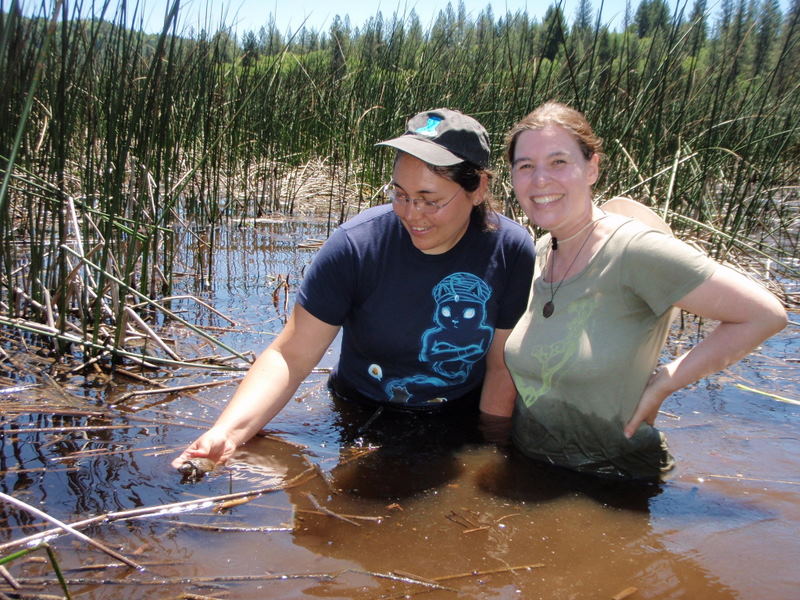
We also had a pretty good time at the conference, and visiting a few of the sites in the old downtown area of Sacramento. Oh yeah!


We also had a pretty good time at the conference, and visiting a few of the sites in the old downtown area of Sacramento. Oh yeah!

This is one of our new hatchlings; the yellow “blob” on its belly is the external yolk. This is the baby’s nutrition source and will continue to be absorbed over the next several days. Sometimes they are MUCH bigger than this, and some hatchlings hardly have any.


Tonight we have a big team, so I wouldn’t be surprised if we find even more. Yay turtles! Other than that, not much to report. It’s kind of quiet up here, so it’s not like I have a lot of adventures to detail. Well, I guess I could give more details about the turtle research.
Last night, most of the turtles we found were in the small meadow, but my son and I found one really exciting turtle in the far wooded meadow. Earlier in the day, I had removed an exclosure from one of last year’s nests, thinking that it would be good to get it out of the way in case another turtle, or even the same one, wanted to nest there. Guess what? We found a turtle nesting less than one foot away from the old nest. I don’t know yet if it was the same turtle, but if it is that is really exciting.
The other cool thing is that we found the turtle right after she finished nesting, so we didn’t have to wait around for her to finish. I love that turtle. #228. Bless her heart. Turtles are awfully cute.
In other news, my son and I held a king snake today, caught by Erika. Super cute! My son wants to get a snake as a pet, and I’m thinking about agreeing to that one. Oh, and I have lost the cables and charger for the field camera. That does not make me happy. I hope they turn up soon. We’re off to the field site in a few minutes, so I think I’ll call this one a wrap. Is that how they say it in Hollywood?

